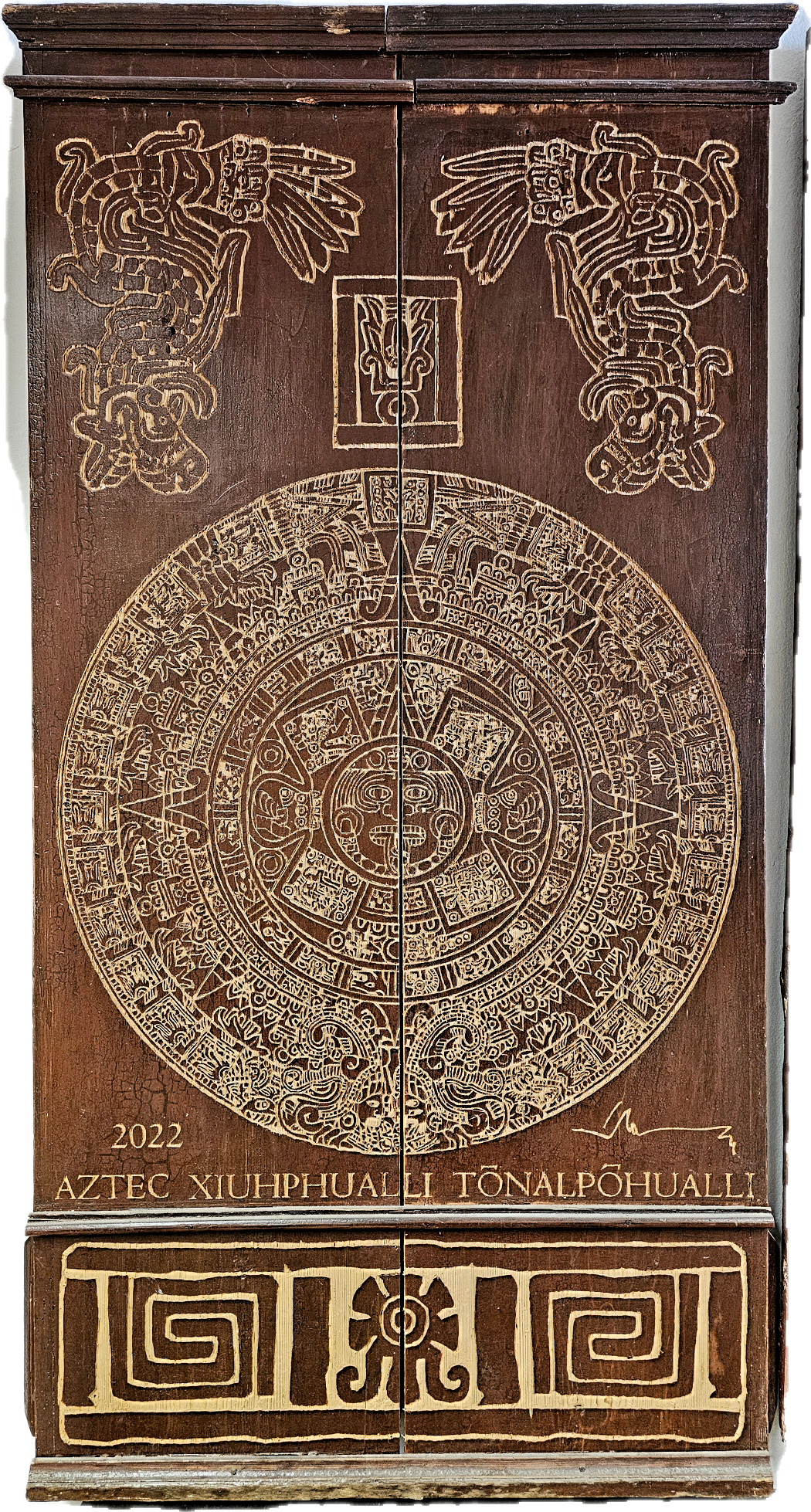Kʼinich Janaab Pakal I
The painting depicts the lid of the sarcophagus of the Mayan king Kʼinich Janaab Pakal I, which measures 3.6 x 2 meters and depicts a man leaning back at the base of a tree, with a bird perched high on top. Markings and symbols run along the edges of the cover and all represent important components of Mayan cosmology.
Pacal's sarcophagus is what he is most famous for today. After all, ancient alien theorists, as interpreted by Erich Von Daniken (his book Chariots of the Gods), claimed that the cover depicted a man riding on a rocket ship, with smoke coming out of the exhaust pipe behind.
In reality, the relief depicts the World Tree, which the Maya believed had its roots in the underworld, its trunk at ground level, and its branches high in paradise. The king is depicted either at the moment of his death, falling from the earthly plane down into Xibalba, or at the moment of his resurrection from the underworld, ascending the world tree towards paradise. The decorations along the edges represent the sky and other signs of the sun and moon, as well as other past rulers of Palenque and the city of Pacal among them.
The painting depicts the lid of the sarcophagus of the Mayan king Kʼinich Janaab Pakal I, which measures 3.6 x 2 meters and depicts a man leaning back at the base of a tree, with a bird perched high on top. Markings and symbols run along the edges of the cover and all represent important components of Mayan cosmology.
Pacal's sarcophagus is what he is most famous for today. After all, ancient alien theorists, as interpreted by Erich Von Daniken (his book Chariots of the Gods), claimed that the cover depicted a man riding on a rocket ship, with smoke coming out of the exhaust pipe behind.
In reality, the relief depicts the World Tree, which the Maya believed had its roots in the underworld, its trunk at ground level, and its branches high in paradise. The king is depicted either at the moment of his death, falling from the earthly plane down into Xibalba, or at the moment of his resurrection from the underworld, ascending the world tree towards paradise. The decorations along the edges represent the sky and other signs of the sun and moon, as well as other past rulers of Palenque and the city of Pacal among them.
The painting depicts the lid of the sarcophagus of the Mayan king Kʼinich Janaab Pakal I, which measures 3.6 x 2 meters and depicts a man leaning back at the base of a tree, with a bird perched high on top. Markings and symbols run along the edges of the cover and all represent important components of Mayan cosmology.
Pacal's sarcophagus is what he is most famous for today. After all, ancient alien theorists, as interpreted by Erich Von Daniken (his book Chariots of the Gods), claimed that the cover depicted a man riding on a rocket ship, with smoke coming out of the exhaust pipe behind.
In reality, the relief depicts the World Tree, which the Maya believed had its roots in the underworld, its trunk at ground level, and its branches high in paradise. The king is depicted either at the moment of his death, falling from the earthly plane down into Xibalba, or at the moment of his resurrection from the underworld, ascending the world tree towards paradise. The decorations along the edges represent the sky and other signs of the sun and moon, as well as other past rulers of Palenque and the city of Pacal among them.
Dimensions: 100 X 160 cm
Technique: carved relief, painted with sand
Material: spruce wood (back of an old wardrobe)
Weight: 10 kg

